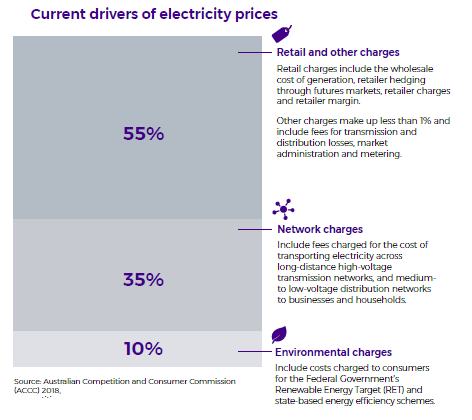-
Australia has recently been hit with a deluge of news and debate over the National Energy Guarantee.
For the energy sector, 2017 was an extraordinary year. Long run trends which had been playing out in Australia over many years came to a head in both electricity and gas markets.
"While approaches came from different quarters there was a consistent story.”
Concerns around cost and reliability reached fever pitch, temperatures soared too in the political debate, resulting in a wave of reviews and reforms.
The tumultuous public conversation was mirrored by concerned discussion in boardrooms around the country.
{CF_IMAGE}
Many businesses had been recalibrating their energy strategy over a number of years, quietly ramping up interest and investment in energy efficiency, renewables and demand management.
Many more started that process in earnest in 2017, as costs surged and businesses moved to take control of their energy position.
In mid-2017 the Energy Efficiency Council (EEC) was approached about the ways we could support businesses to navigate this more dynamic energy landscape.
While approaches came from different quarters – EEC members, businesses, their industry associations and governments – there was a consistent story.
Senior executives and directors without backgrounds in energy were finding a big gap. At one end of the spectrum were the news articles they read each morning with their coffee; at the other end were the hundreds of pages of analysis generated by bodies like the Australian Energy Market Operator (AEMO).
It became clear there was a need for something in between – a practical, approachable briefing on the drivers for the transformation taking place in Australia’s energy markets, how those drivers play out in business energy bills, and the options which businesses have to take control of their energy position.
{CF_IMAGE}
Navigating the energy landscape
The EEC recently released Navigating a dynamic energy landscape: A briefing for Australian businesses to cut through the noise and provide business leaders with an up-to-date, accessible discussion of these topics.
At its heart, the briefing makes two crucial points:
- The trends and technology driving the transformation are the same ones businesses can leverage to take control of their energy position – the move to a low carbon, distributed, responsive energy system.
- There are businesses which are on the front foot, leading on energy strategy and demonstrating the big benefits of a proactive approach to energy management, investment and procurement.
The EEC has a deep interest in how the demand side can solve problems for businesses. However, this briefing is not just focused on energy efficiency and demand response.
At a strategic level, businesses don’t think in terms of supply and demand, or renewables and energy efficiency. They think in terms of energy solutions and how they are aligned with their broader strategic goals.
Kicking energy goals at the ‘G
The Melbourne Cricket Ground (MCG) is one of the most iconic stadiums in the world, attracting millions of patrons to its hallowed turf every year. But unbeknown to punters, the Melbourne Cricket Club (MCC) has moved decisively to take another leadership position, putting in place a best-in-class energy and carbon management strategy.
The MCC started by working with experts to identify big-ticket energy savings opportunities like LED lighting and demand control ventilation technology. Using an energy performance contract – and taking advantage of discounted energy-efficient products enabled by the Victorian Energy Upgrades program – the MCC locked in the financial savings generated by these energy efficiency upgrades.
Those initial works were completed in 2015, however the savings will continue for years to come – including annual electricity savings equivalent to the yearly consumption of 835 homes.
Crucially, they haven’t stopped there: the MCC are now using cutting edge sensors and software to monitor electricity and gas usage in real-time. Maintaining a constant watch on this data has driven even further savings, enabling the MCG’s annual electricity savings to more than double to the equivalent of almost 1,900 homes.
Businesses that thoroughly assess the available energy options are ensuring they are not passive price-takers. They are effectively managing their energy market exposure and their competitive position.
Luke Menzel is CEO of the Energy Efficiency Council, Australia’s peak body for energy efficiency, energy management and demand response.
The views and opinions expressed in this communication are those of the author and may not necessarily state or reflect those of ANZ.
-
-
anzcomau:Bluenotes/social-and-economic-sustainability,anzcomau:Bluenotes/business-finance
Getting on with energy transformation
2018-08-17
/content/dam/anzcomau/bluenotes/images/articles/2018/August/MenzelBriefing_banner.png
EDITOR'S PICKS
-
Two pieces of bad news for Australia in June, one hitting the headlines but the other more worrying for the long term.
26 July 2018 -
Gas prices are skyrocketing and gas intensive manufacturers are bearing the brunt. There are ways to take back control – here’s how.
3 August 2018


